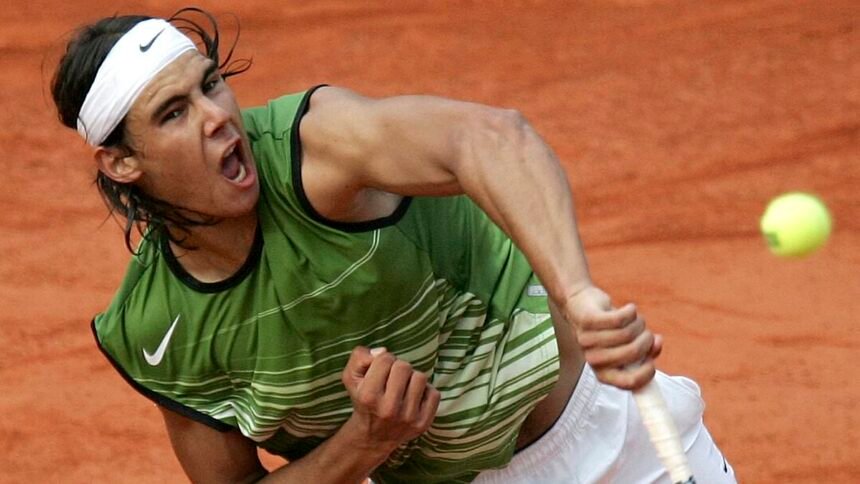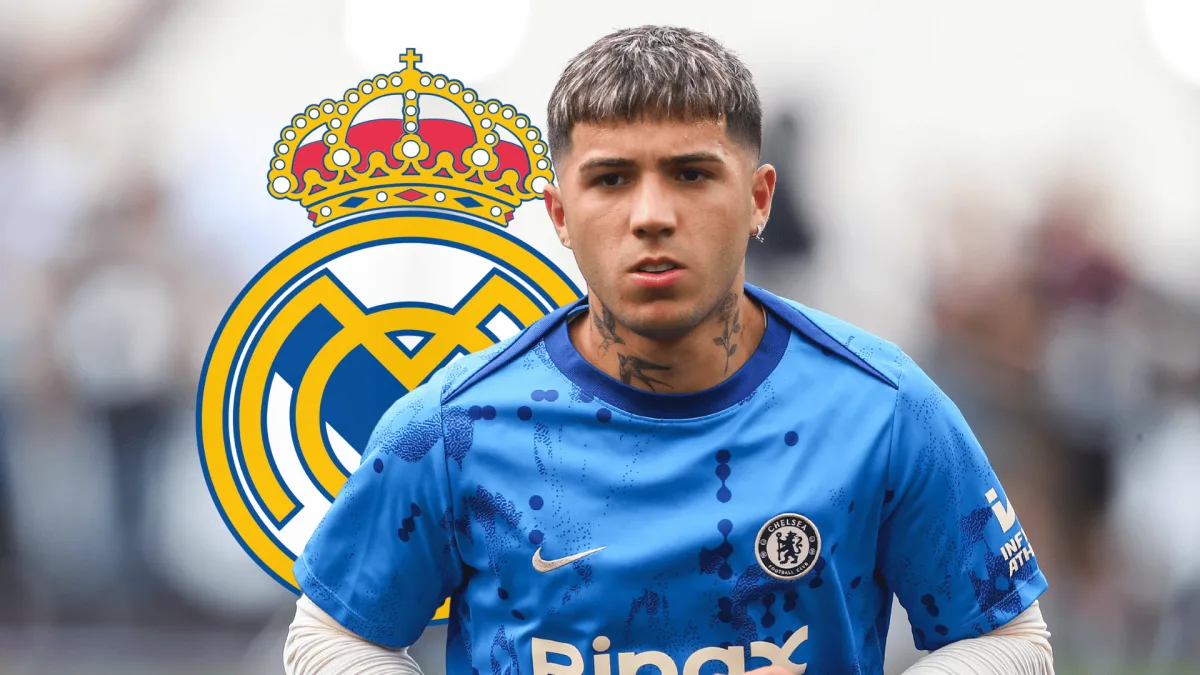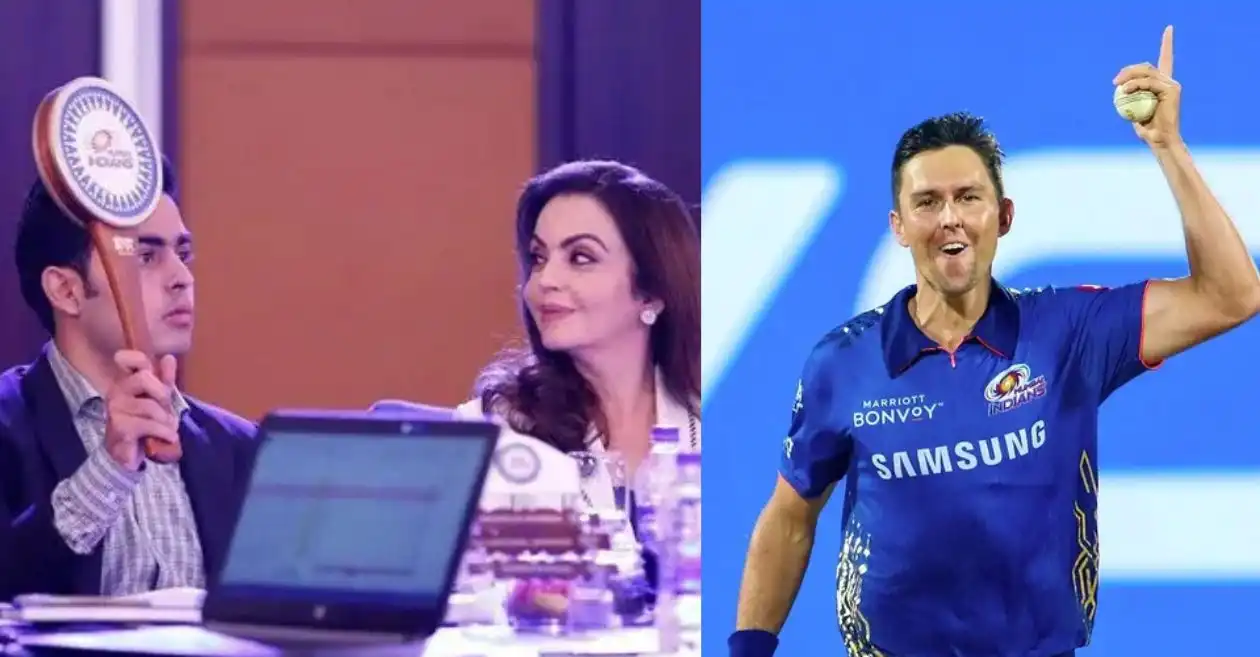As the dust settles on Rafael Nadal’s retirement, the question arises: where does the great Spaniard rank among the best players of all time? Mail Sport has taken on the challenge, and just to make it more difficult we have included both men and women.
To pre-empt the facile criticism of such a list: no, we are not saying Serena Williams could beat Pete Sampras, any more than Rod Laver could. But we are comparing players in terms of their achievements in their own era and against their competitors.
A few notes: until the Open Era in 1968, only amateurs were allowed to compete in Grand Slam events. The world rankings began in 1973 for men and 1975 for women.
I am considering only on-the-court matters. Billie Jean King gets no extra points for her advocacy of the women’s game and nor is Margaret Court penalised for her homophobic bigotry.
Disagree with the order of the top 5? Any glaring omissions? Let us know in the comments…
As Rafael Nadal bows out, Mail Sport ranks the greatest 25 tennis players of all time

25. FRED PERRY (GB)
Years active: 1927-59 (turned pro in 1937)
Grand Slam singles titles: 8
Tour titles: 62
Weeks as world No1: NA
Perry was a world champion table tennis player before switching to the lawns, where he became the first man to win all four majors.
A socialite and wooer of movie stars from both sides of the pond – including Marlene Dietrich no less, Perry once played an exhibition match with Charlie Chaplin and Groucho Marx.
Yet, like Andy Murray, he was far from an establishment figure. Born in Stockport to a cotton-spinning father, his three consecutive Wimbledon titles represented the smashing of a glass ceiling.

Stockport native Fred Perry rose from a humble background and switched from table tennis before winning all four majors
24. ANDY MURRAY (GB)
Years active: 2005-24
Grand Slam singles titles: 3
Tour titles: 46
Weeks as world No1: 41
Yes, there are plenty of men and women with more Grand Slams than Murray who do not feature on this list but standard of opponent must be taken into account.
Given the Scot played at the same time as the best grass court player ever (Federer), the best clay court player ever (Nadal) and the best hard courter (Djokovic), to emerge with three Slams, two Olympic singles golds and a Davis Cup won almost single-handedly (sorry James Ward) is an astonishing return.
Every other player bowed down to the Big Three; Murray bloodied their noses.

Andy Murray challenged the hegemony of men’s tennis’ Big Three, facing harder opponents than many on this list
23. DON BUDGE (USA)
Years active: 1932-61 (turned pro in 1938)
Grand Slam singles titles: 6
Tour titles: 43
Weeks as world No1: N/A
The first player to win the calendar year Grand Slam, a feat only matched by Laver and Graf, the Don only entered 11 majors, as he was ineligible after turning pro.
Tall and flame-haired, his serve is reckoned among the best of all time. He joined the US Air Force in the middle of the Second World War, although he spent much of his time entertaining the troops with matches against his rival Robby Riggs, who represented the Navy.
Budge tore a muscle in his shoulder while completing an Air Force obstacle course and was never the same again.

Don Budge won six of the 11 majors he entered and was the first player to win the calendar year Grand Slam
22. JUSTINE HENIN (Blg)
Years active: 1999-2011
Grand Slam singles titles: 7
Tour titles: 43
Weeks as world No1: 117
The only woman not also named Williams to truly make hay in the Serena era, ‘Juju’ won six of their 14 meetings and led the head-to-head in Grand Slams 4-3.
Especially proficient on clay, Henin is one of only three women, along with Seles and Iga Swiatek, to win the French Open three years in a row.
The last (ever?) great female single-handed backhand, the 5ft 5in Henin punched above her weight with her sublime hand skills. A gorgeous player to watch.

Justine Henin was a wonderful player to watch and went toe-to-toe with Serena Williams
21. IVAN LENDL (Cze/USA)
Years active: 1978-94
Grand Slam singles titles: 8
Tour titles: 94
Weeks as world No1: 270
The man who took tennis out of the English garden party milieu and thrust it into the arena of ruthless, win-at-all-costs sport.
Best known for his predilection for blasting the ball into his opponent’s midriff – as well as his emotionless displays in Andy Murray’s box as his pupil ended Britain’s Slam drought – Ivan the Terrible’s dominant baseline style, with a powerful, heavily-topspun forehand, was a prototype modern men’s tennis.
Along with his eight Slams, The Terminator (yes, he had two nicknames) was runner up 11 times, making him the first man to play 19 finals – a record obliterated by the Big Three. His weeks as world No1 was also a record until Pete Sampras.

Ivan Lendl spent 270 weeks as world No 1 and transformed how the sport was played
20. ANDRE AGASSI (USA)
Years active: 1986-2006
Grand Slam singles titles: 8
Tour titles: 60
Weeks as world No1: 101
At the age of 27, not many thought Agassi would end up on such a list as this. Hobbled by persistent wrist injury, embroiled in a chaotic personal life and – he would later confess – strung out on crystal meth.
He dropped to 141 in the world and his three major titles represent a very good but not a great career. Then came an extraordinary resurgence.
Within a year he was back in the top 10 and five majors in five years followed. The foundation of his game was his ability to change the return of serve from a reactive to an aggressive shot, stepping in and taking the ball on the rise. The best returner ever, until Serena Williams and Novak Djokovic came along.

Andre Agassi won five of his eight majors in the latter stages of his career in a great comeback
19. JIMMY CONNORS (USA)
Years active: 1972-96
Grand Slam singles titles: 8
Tour titles: 109
Weeks as world No1: 268
Something of a precursor to the modern game, in an era dominated by serve and volley Connors operated from the baseline with dogged consistency and a willingness to stay out there as long as it took.
His was a prototype for the kind of post-wooden racket tennis which reached its final form in Djokovic. As antagonistic as his countryman John McEnroe, the Brash Basher of Belleville was one of the first to draw the crowd into a match and use them to his advantage.
He was also ahead of his time in terms of longevity – while many of his contemporaries retired in their early 30s, Connors went on until 43, racking up more titles than any man in the Open Era.

Jimmy Connors was a bastion of longevity, playing until he was 43 to rack up 109 tour titles
18. VENUS WILLIAMS (USA)
Years active: 1994-present (her last match was in March but Venus has still not officially retired)
Grand Slam singles titles: 7
Tour titles: 49
Weeks as world No1: 11
Only her sister prevented her finishing far higher up this list. Between an 1997 US Open defeat by Martina Hingis and the 2017 Wimbledon final against Garbine Muguruza, the only woman to beat her in a Slam final was Serena.
Wielding one of the most graceful, rhythmic service actions of all time and a thoroughbred athlete, she had terrible luck with injuries, meaning her last title came back in 2008.

Venus Williams had awful misfortune with injuries and was denied more than her seven majors
17. SUZANNE LENGLEN (Fra)
Years active: 1914-27 (turned pro in 1926)
Grand Slam singles titles: 8
Tour titles: 83
Weeks as world No1: NA
The first female athlete to reach global superstardom, La Divine (the goddess), was the woman who forced Wimbledon to move to its current home in 1922 to accommodate fan demand. Lenglen’s career stalled for four years due to World War One but, once it resumed, she lost only a single match for the rest of her career, with a 179-match winning streak including the so-called Match of the Century against Helen Wills in Cannes.
For a nation licking its wounds and counting its dead after the Great War, Lenglen became the heroine France needed.

Suzanne Lenglen was the first female athlete to attain global superstardom
16. JOHN McENROE (USA)
Years active: 1978-94 (singles), 1978-2006 (doubles)
Grand Slam singles titles: 7
Tour titles: 77
Weeks as world No1: 170
The man with the mouth of a demon and the hands of an angel. Brash and abrasive, Mac the Knife played with a grace and delicacy unmatched until the arrival of Federer.
His 1980 final against Bjorn Borg, immortalised in a 2017 film, was the best match of all time until Nadal’s twilit triumph over Federer at Wimbledon in 2008.
McEnroe got his revenge in 1981, one of three wins against Borg that year which helped usher the Iceman into premature retirement. Along with Martina Navratilova, the greatest volleyer who ever lived.

John McEnroe is remembered for his outbursts at umpire as well as his angelic ability
15. BILLIE JEAN KING (USA)
Years active: 1959-90 (turned pro in 1968)
Grand Slam singles titles: 12
Tour titles: 67
Weeks as world No1: 0
Her legacy is so colossal that actual on-court achievements seem incidental but she won a dozen Slams in a highly competitive era which spanned the end of Court’s reign and the rise of Chris Evert and Evonne Goolagong Cawley.
Her campaigning did detract from her career at times and one of her greatest motivations was to create an environment in which women could focus on their game, rather than the fight for recognition.
‘Deep down,’ she once said, ‘I wonder how good I really could have been if I had concentrated just on tennis.’

Billie Jean King’s campaigning off-court perhaps held her back from even further success
14. KEN ROSEWALL (Aus)
Years active: 1950-80 (turned pro in 1956)
Grand Slam singles titles: 8
Tour titles: 147
Weeks as world No1: 0
Wielder of the best ever slice backhand, he missed 10 years of Slams before the Open Era, winning 15 of the ‘Pro Majors’ in that time.
Sarcastically christened ‘Muscles’ by his colleagues due to his slight physique and powder-puff serve, Rosewall had the last laugh as he proved the fittest of the lot.
In an era before sports science and cryotherapy chambers, his longevity was an utter outlier not just in tennis but in sport: his last two Slams came aged 36 and 37 and he remains the oldest-ever champion.

Ken Rosewall is still the oldest-ever champion, winning his final Slam at the age of 37
13. MONICA SELES (Yug/USA)
Years active: 1989-2003
Grand Slam singles titles: 9
Tour titles: 53
Weeks as world No1: 178
A nine-inch knife prevented Seles topping this list. In the first four years of her career – from the age of 15-19 – she had a 90 per cent win rate. Then a crazed Graf fan stabbed her in the back during a changeover in Hamburg.
The physical wound healed but she was never the same player, despite adding a final Grand Slam title in Australia in 1996.
In style she was highly unorthodox, with her double handed forehand and backhand providing a constant barrage of flat power.

Being stabbed changed Monica Seles’ life and career – she could have topped this list
12. PETE SAMPRAS (USA)
Years active: 1988-2002
Grand Slam singles titles: 14
Tour titles: 46
Weeks as world No1: 286
Excluding the beanpoles – Sampras was only 6ft 1in – Pistol Pete’s serve was the best of all time in the men’s game.
His shoulder was like a Formula One engine – a doctor who worked with baseball pitchers once said it was the strongest he had ever seen – and that allowed Sampras to produce incredible power even on the second serve.
He was almost unique in using the same ball toss for every serve, whether flat, kick or slice, making him impossible to pick out of the hand.
Panther-like agility at the net completed the package and if pure serve and volley died when Pete holstered up his pistols for the last time, then what a way to go.

Pete Sampras had a formidable serve, an element of unpredictability, and was a net panther
11. BJORN BORG (Swe)
Years active: 1973-84, 1991-93
Grand Slam singles titles: 11
Tour titles: 66
Weeks as world No1: 109
Between 1978 and 1980 Borg won the French Open and Wimbledon back-to-back, three years in a row.
Considering there was only a two-week break between the two, and the surfaces required totally different styles – Borg played a baseline game in Paris and serve-volleyed in London – that may be the greatest achievement in tennis.
The first player to hit with heavy topspin on both forehand and backhand, Borg ushered in the modern style of clay court tennis. In every essence of the word he was the coolest man on the planet.

Winning Wimbledon and the French Open back-to-back three years on the spin may be the greatest achievement in tennis by Bjorn Borg
10. MARGARET COURT (Aus)
Years active: 1960-77
Grand Slam singles titles: 24
Tour titles: 92
Weeks as world No1: 0
The caveat always applied to her majors total – now shared with Djokovic – is that 11 of her Slams came at the Australian Open, when few of the top Europeans and Americans travelled Down Under.
That rightly drops her a few spots in the ranking but the fact remains she won over half of the Grand Slam events in which she competed.
The Aussie Amazon was named for being far ahead of her time in terms of fitness training; she lifted weights and ran on sand to perfect her imposing physique.
Including doubles she won an eye-watering 64 majors, some way clear of anyone else.

Margaret Court won 11 of her 14 Grand Slam titles at the Australian Open, which drops her down a few spots
9. CHRIS EVERT (USA)
Years active: 1972-89
Grand Slam singles titles: 18
Tour titles: 157
Weeks as world No1: 260
If Nadal is the king of clay then Evert is the queen. She went unbeaten on the surface for six years, winning 175 matches and with more 6-0, 6-0 wins (11) than sets dropped (eight). After that streak was broken she won another 72 in a row.
A reason why her record gets less acclaim that Nadal’s – and a reason why she is not higher on the list – is that she skipped three French Opens in a row at her peak to play in the USA’s World Team Tennis league.
But the US Open was played on clay during this time so she still won seven clay-court Slams in a row in which she competed.

Chris Evert went unbeaten on clay for six years – she was its veritable queen
8. HELEN WILLS (USA)
Years active: 1919-38
Grand Slam singles titles: 19
Tour titles: unknown
Weeks as world No1: NA
The most dominant player in history, Wills had a 180-match win streak from 1927 until 1933 and her record of eight Wimbledon titles stood for half a century.
She played 24 Grand Slams in her career, won 19 and was runner up in three. In the other two she withdrew with injury.
One of the first female power players, an opponent remarked: ‘She either broke your confidence or she broke your arm.’
She truly transcended her sport: Alexander Calder sculpted her in wire and, more bombastically, Frida Kahlo’s husband Diego Rivera – with whom Wills had an affair – painted her nude image on the ceiling of the Luncheon Club of the Pacific Stock Exchange in San Francisco.

Helen Wills had a 180-match win streak from 1927 until 1933, making her the most dominant player in history
7. ROD LAVER (Aus)
Years active: 1956-79 (turned pro in 1963)
Grand Slam singles titles: 11
Tour titles: 198 (72 in Open Era)
Weeks as world No1: NA
The only man after Don Budge in 1938 to win the calendar Slam – all four majors in a season – and he did it twice, once as an amateur in 1962 and again as a professional in 1969.
For five years before the dawn of the Open Era, as a professional he was locked out of the Grand Slams, meaning his numbers are lower than they might have been.
One of the game’s purest ever ball strikers, wrists like iron bands granted the Rocket incredible power.

Rod Laver was one of the purest strikers of the ball and won 11 Grand Slam trophies
6. MARTINA NAVRATILOVA (Cze/USA)
Years active: 1974-2006
Grand Slam singles titles: 18
Tour titles: 167
Weeks as world No1: 332
A supreme athlete, a winning machine and probably the best volleyer of all time. Including doubles she won 59 Grand Slams and with astonishing longevity: her last major came 32 years after her first and a few months before her 50th birthday.
The rivalry between Navratilova and Evert defined the 70s and 80s as they carved up the game between them. Of their 80 matches, 60 were in finals and Navratilova edged the head to head 43-37.

Martina Navratilova was a supreme athlete and spent 332 weeks at the top of the rankings
5. ROGER FEDERER (Swi)
Years active: 1998-2022
Grand Slam singles titles: 20
Tour titles: 103
Weeks as world No1: 310
Between 2004 and 2007, his dominance over everyone other than Nadal on clay was supreme. He won 11 out of the 16 Grand Slams – including every Wimbledon and US Open.
In the second half of his career he did struggle to come to terms with the dual threat of Nadal and Djokovic but for one thing they were a couple of years younger and for another, those two always knew who they had to aspire to beat; Federer had to adapt his game mid-career after wiping the floor with everyone.
An unparalleled stylist, he elevated tennis to an art form.

Roger Federer elevated tennis to an art form with his gorgeous style of play – and was particularly dominant between 2004 and 2007
4. RAFAEL NADAL (Spa)
Years active: 2001-24
Grand Slam singles titles: 22
Tour titles: 92
Weeks as world No1: 209
The greatest competitor the game has ever seen and the best player on a single surface. Fourteen titles on the French Open clay, 12 in Barcelona, 11 in Monte Carlo and 10 in Rome. When at peak physical condition he was never beaten at Roland Garros.
Nadal does not quite have the record at other Slams to crack the top three, although his victory at the 2022 Australian Open, beating Daniil Medvedev from two sets down, was extraordinary.
He and Federer are – appropriately – devilishly difficult to separate but Nadal’s 24-16 lead in the head to head gives him the edge.

Rafael Nadal is the greatest player ever on a single surface but could have done more on others
3. STEFFI GRAF (Ger)
Years active: 1982-99
Grand Slam singles titles: 22
Tour titles: 107
Weeks as world No1: 377
‘Fraulein Forehand’ was the only player to win the calendar Golden Slam – all four majors and Olympic gold in the same year, in 1998. In 1995 and 1996 she missed both Australian Opens through injury but won the rest, giving her two more unbeaten years in the majors.
She had another run of 13 Slam finals in a row and these records were compiled when partially overlapping with all-time greats Evert, Navratilova and Seles.
Her foot speed allowed her to run around her backhand to hit ‘inside out’ forehands in a manner rare at the time but ubiquitous in the modern game.

Steffi Graf managed to win all four Grand Slams and the Olympics in 1998 – unprecedented
2. SERENA WILLIAMS (USA)
Years active: 1995-2022
Grand Slam singles titles: 23
Tour titles: 73
Weeks as world No1: 319
She and sister Venus arrived in tennis like a brace of meteors, playing a game unlike anyone else. Around 70 per cent of tennis points end within the first four shots and Serena had the best serve, the best return and the best forehand to clean up thereafter.
Throughout her entire career there was not a single woman who truly cracked her code and only sporadic dips in motivation prevented her pushing towards 30 Slams.
When fully dialled in and match-sharp, she was unbeatable. After having her first child in 2017 she could not quite manage to add the 24th major that would have seen her top this list.
On this list, 23 players have at least one weakness: Djokovic and Graf were tennis perfection

Serena Williams, an absolute powerhouse, could have topped this list with an extra major
1. NOVAK DJOKOVIC (Ser)
Years active: 2003-
Grand Slam singles titles: 24
Tour titles: 99
Weeks as world No1: 428
Sometimes the numbers speak for themselves and Djokovic’s numbers are deafening. Utterly dominant on hard courts, the only man capable of going toe-to-toe with Nadal on clay and a 3-0 record against Federer in Wimbledon finals.
He has distilled tennis down to its purest, most simple formula: relentless groundstrokes hit with a minimum of risk into the corners.
Allied to this is an unparalleled ability to peak at the most crucial moments and freakish flexibility. As the supercomputer Deep Blue did to chess in 1997, Djokovic has done to tennis: the game has been solved.

Novak Djokovic is the one of two players on this list without a weakness (alongside Graf) and has 24 Grand Slam titles

























